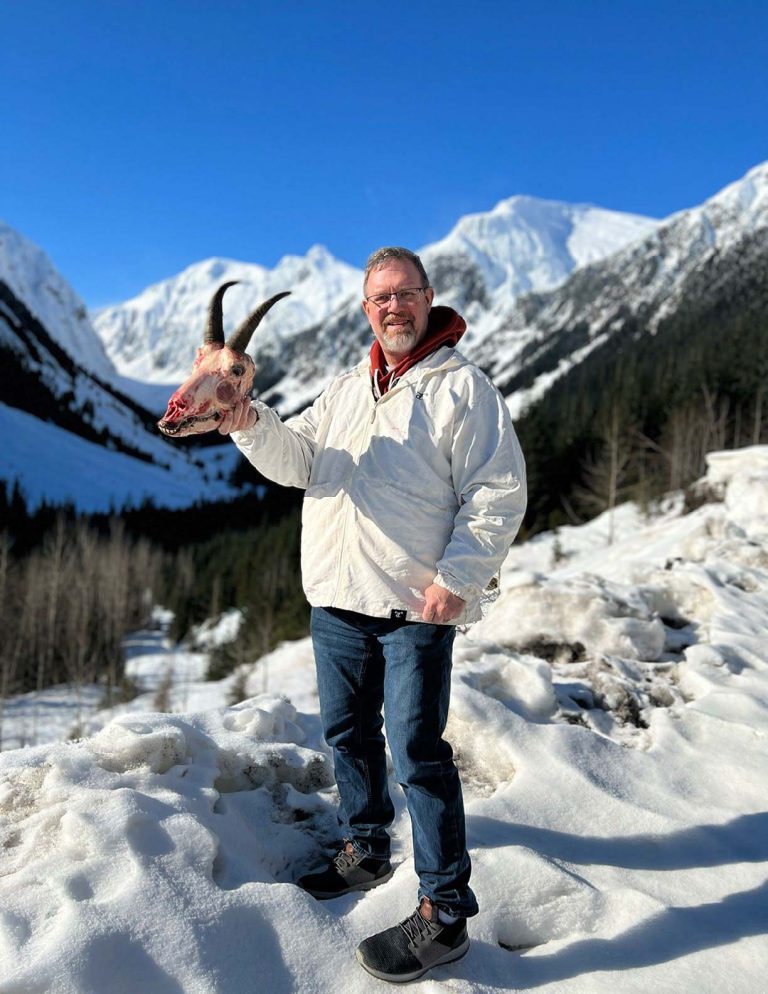Alberta mountain goats have struggled to maintain populations that can sustain hunting. Fortunately, we have had a draw for many years, but obtaining a license was like winning the lottery. I knew the odds of drawing an Alberta license were slim to none. Looking into potential hunts in British Columbia, I found a late-season opportunity with Milligan Outfitting. Bob has been chasing goats for nearly four decades and has one of the best areas available for mature billies. A quick decision had me scrambling to find time to hit the gym and prepare my rifle for the adventure.
In mid-February, I pointed my truck west for the 17-hour drive to goat camp. Bob and his son Bobby had been hunting for weeks, and I would be their last hunter for the season that ran through the end of the month. Late-season mountain goat hunts can be cold with lots of snow. The animals are forced onto wintering areas, where steep terrain reduces snow accumulations. It can be a time of year when goats are easier to find, but that doesn’t mean they are easier to hunt. The Milligans have a reputation for finding big billies, so I felt confident about choosing them after years of trying to harvest a mountain goat.
I have hunted goats seven times but never pulled the trigger. I have seen some great goats, but I either couldn’t get to them or knew I would never retrieve one if I did shoot it. Goats have slowly reached the top of my bucket list, and booking a hunt was exciting. I had never hunted the late season and so I was up for any adventure.
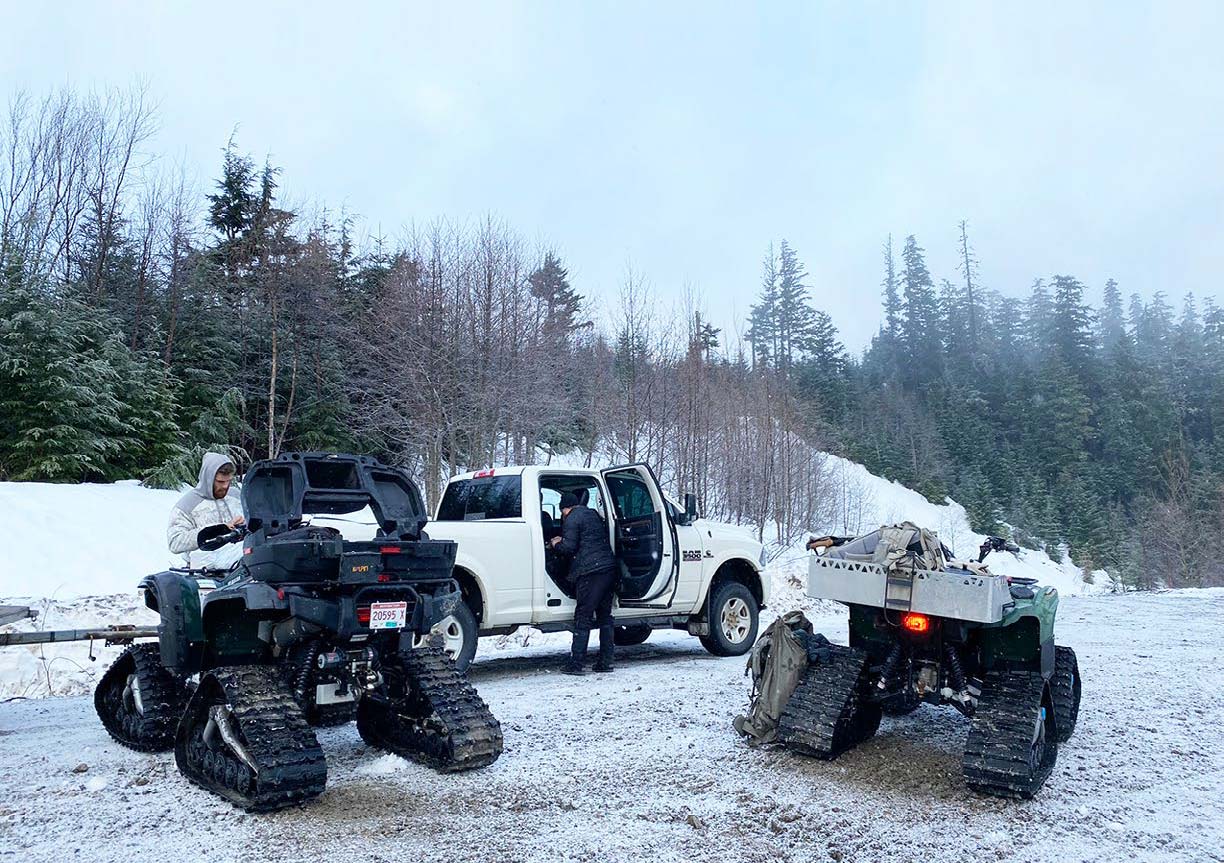
I arrived to meet Bob the day before the hunt. We ate a quick breakfast and headed up the mountain as the sun brightened the eastern sky. Highways and winding forestry roads would lead us to goat territory. We finally parked the truck and trailer and headed out on tracked quads to climb a mountain. The trail was steep, with plenty of switchbacks. The snow was unbelievably deep in places, and having an experienced crew was already showing benefits. I had packed carefully for the adventure and had different clothing for hiking or sitting. Quadding and sitting can be cold, and the ever-changing weather can add to the challenge.
We climbed in elevation until we were about three-quarters to the top. We stopped in an opening overlooking a vast valley and set up the spotting scopes to comb the steep mountains on the other side. We would not hunt the mountain we navigated, but instead use it as a post to see as much country as possible.
The mountain across from us overshadowed a long valley that stretched miles to the west. Steep cliffs with black rock were bare of snow. The top of the mountain was covered in deep snow, and Bob explained that once goats got onto their winter range, they were often trapped there until spring. The snow is too deep to navigate, and if an animal falls into a snow sink, there is no way of escaping. Horn growth and body condition for goats are tied closely to their winter range and accessible groceries. Lush green grass through the alpine is everywhere in the summer, but eking out a living in the rocks and stunted shrubs is often challenging.
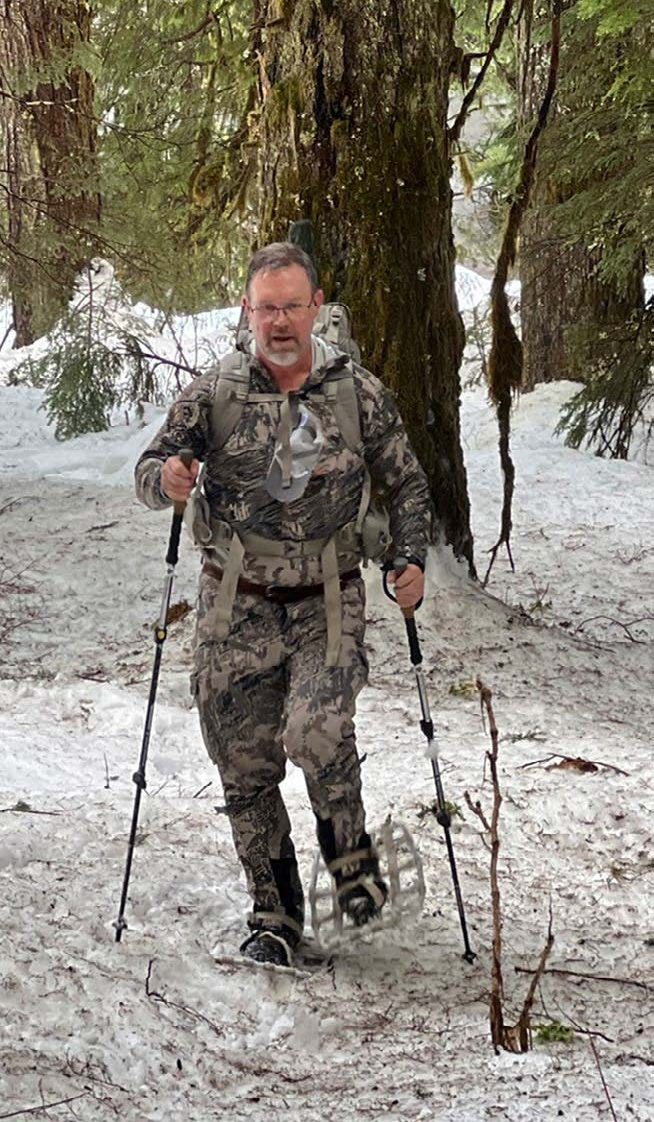
The day would be spent behind glass, looking whenever the snow, fog and clouds allowed. We glassed when conditions allowed and patiently waited when the weather prevented us from looking more. The Milligans ran a set of Swarovksi spotting scopes and could find white goats while I strained to see what they were seeing. It did not take long to spot goats, and Bobby found the big one late in the afternoon. Bobby pointed to the far ranges of the valley, miles from where we sat, and we watched the billy and his two buddies until the sun started to set. We had been sitting in the snow all day, but the excitement was evident on the way out as I bombarded my guides with questions.
We needed the right conditions and weather to hunt and headed back up the mountain first thing on day two. We meandered up the same trail we had on the first day and pulled out the spotting scopes. I had not even organized my gear when Bobby found the big goat. The billy had stayed in the same bed all night. I expected to sit and watch the goat for a bit or discuss the weather, but a plan of action was already in place.
We headed down the mountain quickly and parked the quads in a clear-cut above the river. With snowshoes fastened, we marched down and crossed the flowing water. It would be a full day’s hike from where we were starting. The goat was a long way up the valley, and the quick pace increased my heart rate until we finally fell into a hiking rhythm.
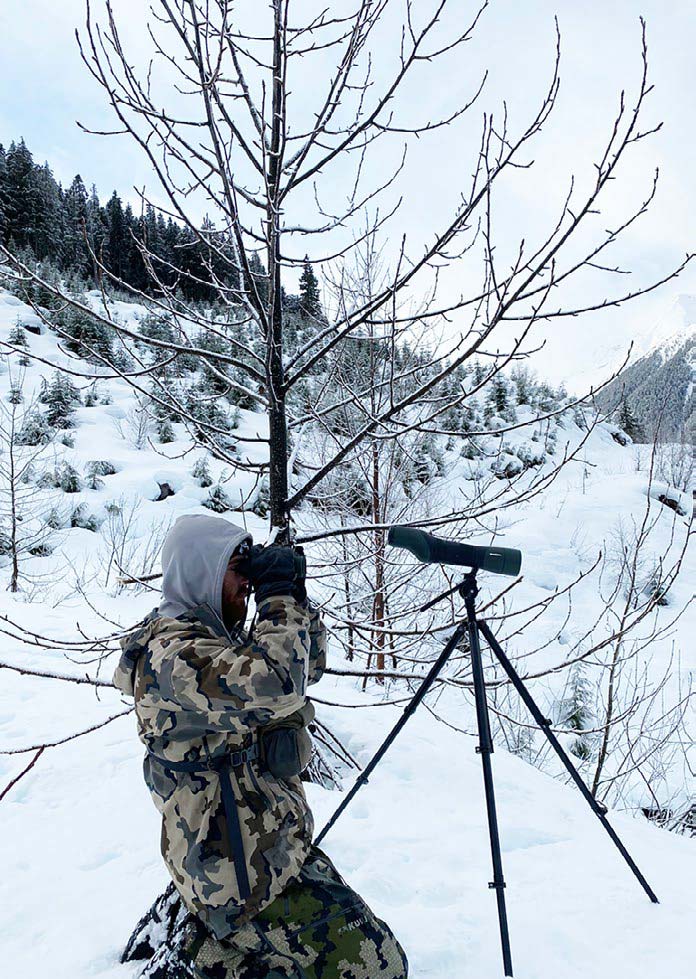
It took all day long snowshoeing up the river valley to get below the goats. The custom-made square, aluminum-framed snowshoes were ideal for the terrain. They had cleats built into the bottom for traction on ice and in the steep country. It was early afternoon when we found a spot to glass and were fortunate to see the three billies moving farther up the valley. Our timing was impeccable, and without the luck of seeing the goats move, we would never have known where to find them. It would mean more hiking, but at least we knew where to look.
The hike was challenging as we negotiated mature forest, massive logs on the forest floor, rockslides, and the river’s edge. We often had to climb and then drop elevation to avoid problem areas. It was a steady climb with few breaks. I used hiking poles for balance and appreciated the extra support.
It was getting late in the afternoon, and we needed to find the goats before we ran out of daylight. Bob discussed dropping gear and returning the next day, but I was glad we stuck with a plan to find the goats after the long hike. We got to a spot where we could climb in elevation and look for the goats, even though we didn’t know exactly where they were, and we needed to find some open country to locate them. We climbed steadily, and I could feel the muscles in my legs burning. One step at a time took us closer to goat country, but it was so steep that all we could see were the trees around us. Climbing along the edge of a rockslide, Bob snuck to the edge to look up the mountain. Finding the goats directly above the slide on a ledge took less than a minute. I never turn down luck when available, and to find the goats within sight was a blessing.
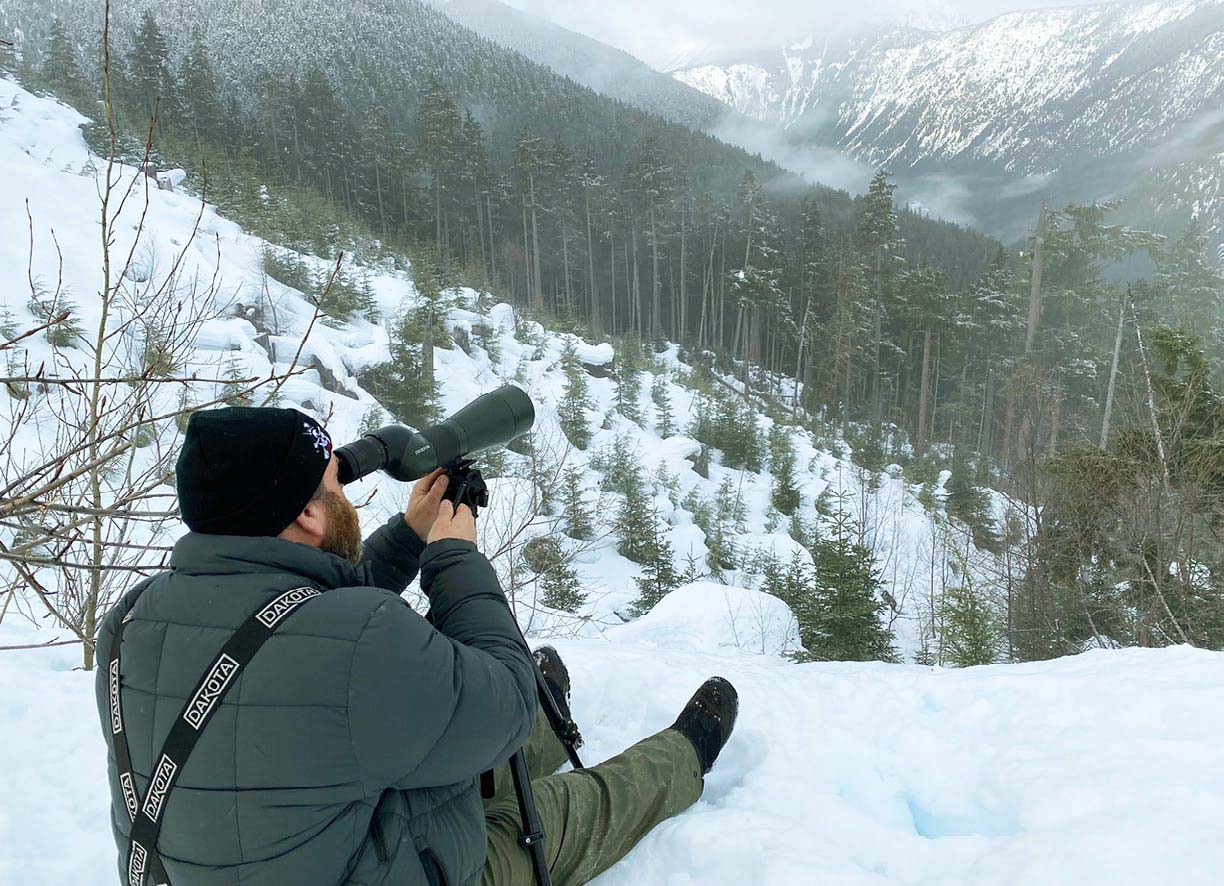
We carefully climbed higher in the cover of the timber and eventually ran out of concealment. Bob edged into the slide, found the goats, and asked if I could make the shot. The goats were at 360 yards at a steep angle. With a good rest, I was confident I could do it. I had practiced for days before the trip and had shot distances greater than what the goat presented.
I put on my whites to stay concealed and not alarm the target, crawled out onto the rocks, and tried to find a place to sit and shoot. Finding a suitable and comfortable spot was challenging, and Bobby placed his framed pack in front of me for a rest. The two smaller goats were the closest, near the bottom ledge. The target goat stood by himself on the top edge of the ledge. I took a deep breath, settled in behind my scope, and found the billy with my crosshair. The goat stood behind the only tree available, and I waited for it to move forward. The goats knew we were there, and our white outfits likely gave them a false sense of security. The big billy took a few steps forward, and I clicked the safety off on my rifle.
I took a deep breath and felt my body relax. My crosshair steadied on the vitals of the goat, and I exhaled and slowly squeezed the trigger. The goat tumbled off the ledge at the rifle’s report and disappeared into the avalanche chute. I watched the goat plunge and flip in my scope until it disappeared. The other two goats stood and watched, trying to figure out what was happening. I had just shot my mountain goat.
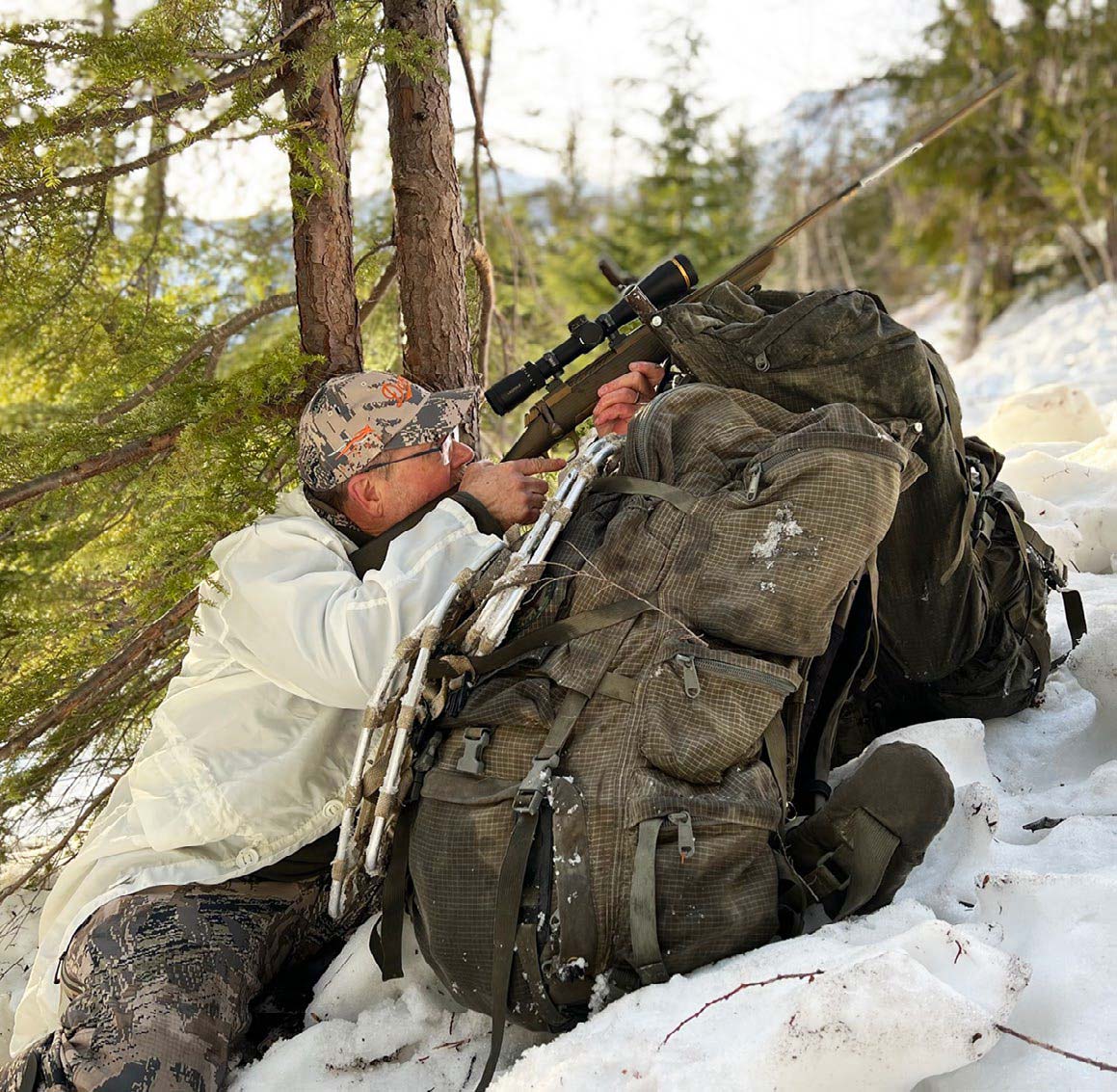
The goat would be less than 300 yards above us, but the climb would take over an hour to get to it. The loose rocks and steep terrain made it nearly impassable. We eventually found the billy in a side chute. It had careened down the rocky terrain and looked worse for wear, but everything was intact, even the horns.
The sun was setting, and we fastened headlamps to our caps for the long trail and walked out. It would be a long and tiring hike, but having the mountain goat in our packs encouraged us to continue. After 5:30 p.m., we had the goat caped, broken down, and started the journey in darkness.
It took about seven hours to get back to the quads, and we still had another hour and a half back to the truck. We finally returned to base camp at 3 a.m. and falling asleep didn’t take long. After decades of dreaming about harvesting a mountain goat, I had fulfilled my quest. Perhaps someday, I will get to hunt this regal animal in Alberta. However, I will never regret taking advantage of an opportunity on short notice. Goats had been my nemesis for years, and I was glad to find success at last.
My mountain goat made Boone and Crockett and had the biggest bases of 48 goats registered in the area. I was beyond thrilled with the adventure and the trophy quality of the goat I had dreamed about for decades.
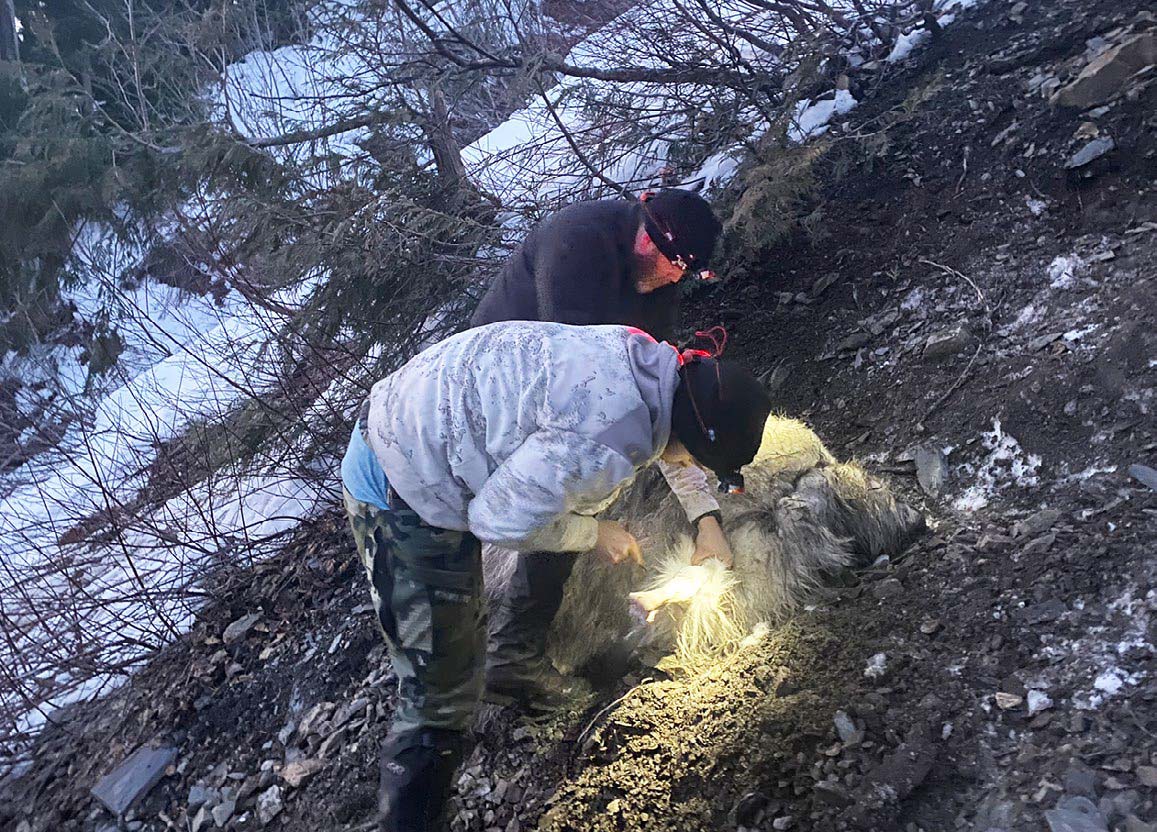
Specialized Goat Gear
I spent a month at the range, shooting my Browning X-Bolt rifle in .300 Win. Mag. I knew that goats could be very tough, so the choice to shoot a .30 caliber bullet was easy. Bob had let me know that 300-yard shots were not uncommon.
Federal Premium Terminal Ascent with 200-grain bullets proved accurate downrange with regular practice.
I ordered a custom turret for my Leupold VX – 6HD 3–18×44 scope, with elevation and temperatures to match the coastal conditions. Shooting out to 400 yards with softball-size groups provided confidence.
I had SITKA hats, gloves, base layers, and outerwear for staying warm, dry, and comfortable when hiking. A set of Blizzard Aerolite parka and bib pants offered extreme warmth with minimal bulk. They were acquired for sitting, riding all-terrain vehicles, and facing challenging weather. The insulation in the clothing is infused with tiny particles of aerogel (initially developed by NASA for aerospace applications). Those infused fibers block out cold while trapping air and warmth. The two-layer GORE-TEX waterproof fabric ensured protection from rain and moisture.
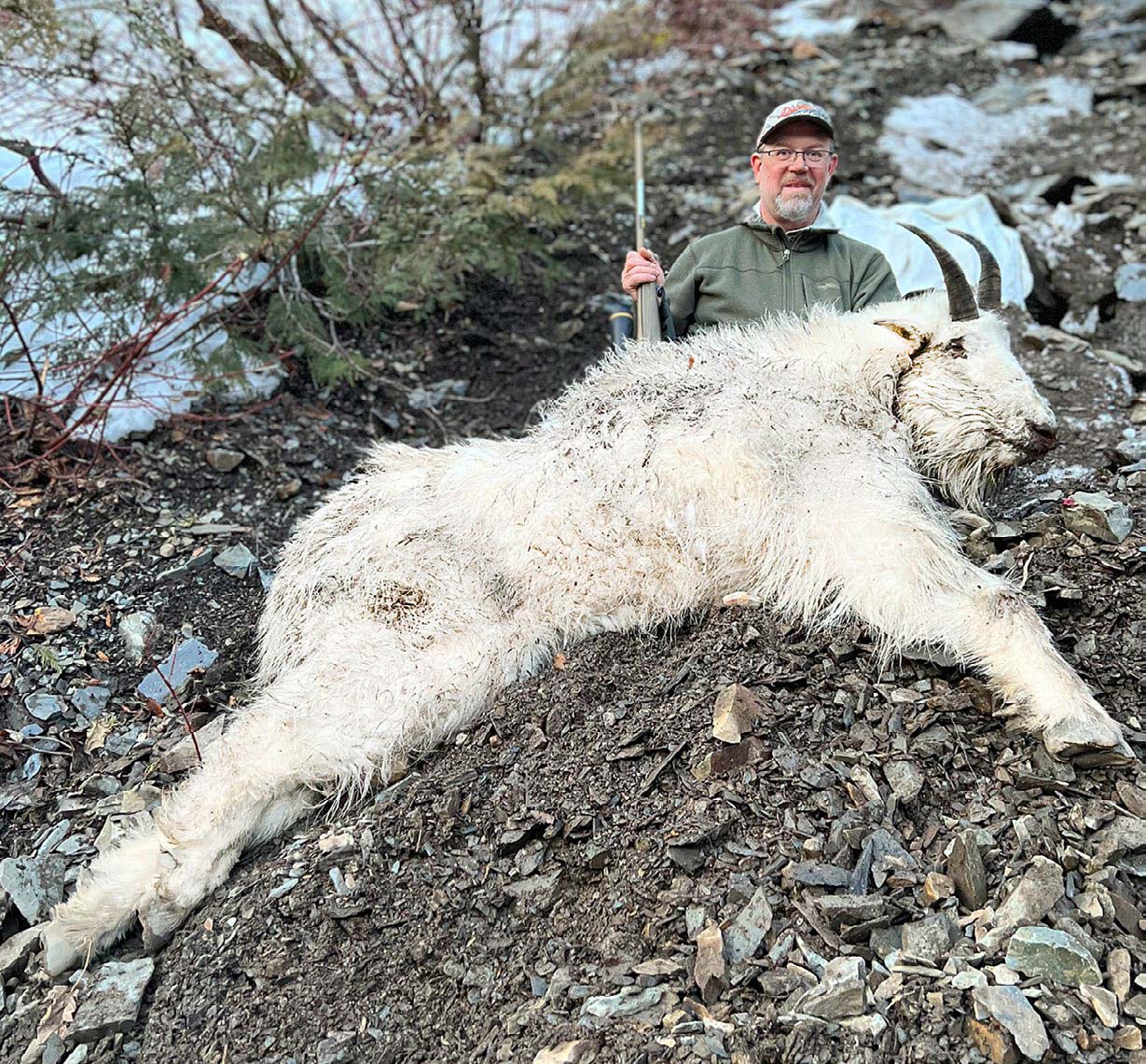
My constant companion was an ALPS Elite Series Hunting Pack. The lightweight and durable design was adjustable and versatile for packing the basics and much more. The Elite packs are based on the design of the Commander X frame. A meat shelf can haul meat and extras, and the gun sling kept my hands free for hiking poles. The ALPS Extreme Bino Harness kept my optics secure and hands-free to focus on the trail.
Wildlife Research Center field wipes are essential for grueling trips like late-season mountain goats. Cleaning the sweat off my face and neck felt as good as the shower at the end of the hike.
Milligan’s Outfitters offers guided mountain goat and bear hunts in northwest B.C., Canada.
Per our affiliate disclosure, we may earn revenue from the products available on this page. To learn more about how we test gear, click here.



